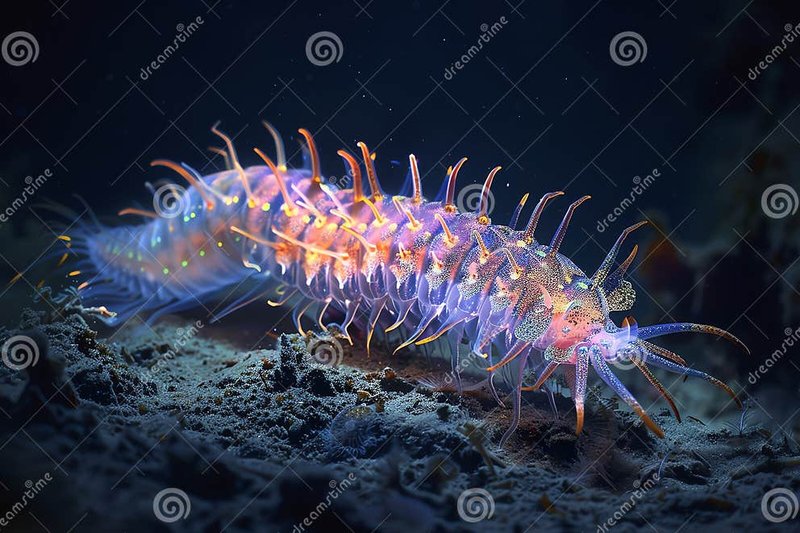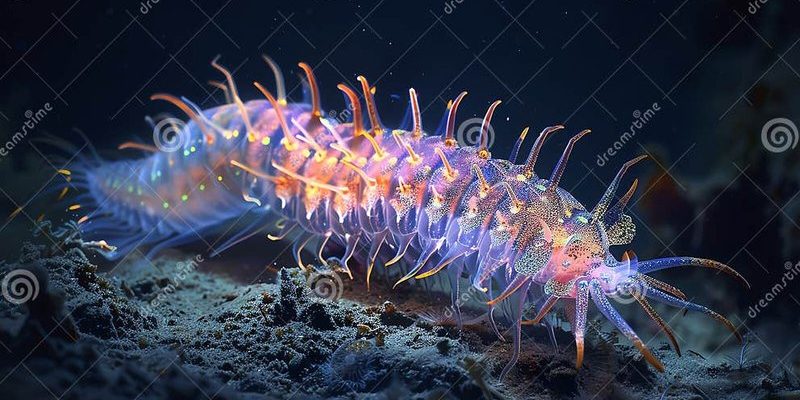
Bioluminescence is like having built-in flashlights, enabling these worms to attract mates, ward off predators, or simply show off their beauty in the deep sea. Let’s dive deeper into the incredible world of these stunning bristle worm species, where we’ll explore what makes them tick, why they’re all the rage in marine biology, and how they’re more connected to our lives than you might think.
What Are Bioluminescent Bristle Worms?
Bioluminescent bristle worms belong to the class Polychaeta, which includes various marine worms. These little organisms can range from a few centimeters to several meters long, with many species showcasing vibrant colors that can change depending on their environment. Imagine these worms as a colorful party costume for the ocean—each one unique and dazzling in its own way.
These worms have special cells called *photocytes* that produce light. When certain chemicals in the cells react, light is emitted! It’s a bit like turning on a light switch, but instead, you’ve got tiny, glowing cells doing the illuminating. This light can be blue, green, yellow, or even red, and it changes depending on the species and the environment. Pretty cool, right?
The Role of Bioluminescence in Survival
Now, you might be wondering why these worms bother glowing in the first place. Well, bioluminescence plays a big part in their survival strategy. For many species, this brilliant light serves as a defense mechanism against predators. When threatened, a bristle worm might emit a quick burst of light to confuse or scare away its attacker. This tactic can buy the worm precious seconds to escape.
Additionally, bioluminescence can help in attracting mates. Just think of it as a dazzling display of lights to catch the attention of potential partners. Some species even use different patterns of light to communicate with each other. It’s like a glowing Morse code under the sea! This ability plays a crucial role in ensuring the continuation of their species.
Different Species of Bioluminescent Bristle Worms
When it comes to bioluminescent bristle worms, there are several remarkable species to explore. Here are a few that stand out:
- Ophryotrocha gracilis: Known for its bright green light, this species can be found in various marine environments, from rocky shores to sandy bottoms.
- Spiochaetopterus costarum: This worm emits a beautiful blue glow and can be found in deeper ocean waters, contributing to the stunning visuals of marine life.
- Hyalinoecia tubicola: With its striking red light, this worm is a true standout, often living in burrows that it creates in the sand.
Each of these species brings something unique to the table, whether it’s their color, size, or habitat. By studying these luminescent marvels, scientists gain insights into marine ecosystems and the evolutionary advantages of bioluminescence.
Where Do You Find Bioluminescent Bristle Worms?
You might think these glowing worms are hard to find, but surprisingly, they inhabit various marine environments all over the world. From the shallow coastal waters to the dark depths of the ocean, bioluminescent bristle worms can be found in places like coral reefs, sandy ocean floors, and even muddy habitats. They tend to thrive in environments rich in organic matter, which gives them plenty of food.
If you ever get the chance to go snorkeling or diving in tropical regions, you might just spot some of these glowing wonders. Many species are more active during the night, lighting up the ocean floor like a festive light show. Just remember to be respectful of their habitats; after all, we don’t want to disturb these beautiful creatures!
Why Bioluminescent Bristle Worms Matter
Understanding bioluminescent bristle worms is crucial for marine biology and ecological conservation. These worms play significant roles in their habitats, contributing to nutrient cycling and supporting food webs. As bottom feeders, they help break down organic matter, making nutrients available for other marine life. This process keeps the ecosystem healthy and flourishing.
Moreover, studying these worms can shed light on broader topics like climate change and ocean health. Since they react to environmental changes, scientists often look at bioluminescent species as indicators of ecosystem health. By monitoring these worms, we can gain insights into the overall condition of marine environments and take action if necessary.
How to Support Bioluminescent Worm Conservation
With many marine species facing threats from pollution and climate change, supporting the conservation of bioluminescent bristle worms is more important than ever. Here are a few ways you can help:
- Reduce plastic use: Minimizing plastic waste can help keep oceans clean for marine life.
- Support sustainable seafood: Choosing sustainably sourced seafood can reduce the negative impacts on ocean habitats.
- Participate in beach cleanups: Volunteering for local beach cleanups can make a big difference in marine conservation.
Taking these steps not only helps protect bioluminescent bristle worms but also contributes to the overall health of our oceans. Every little bit counts, and when we work together, we can create a brighter future for marine life!
Bioluminescent bristle worms are just one of the many wonders of our oceans. Their stunning light displays are not only a sight to behold but also essential for their survival and the health of marine ecosystems. By understanding these amazing creatures and supporting their conservation, we can ensure that the shimmering beauty of bioluminescence continues to grace our seas for generations to come. So next time you think of the ocean, imagine those little glowing worms lighting up the deep—nature’s very own light show!

